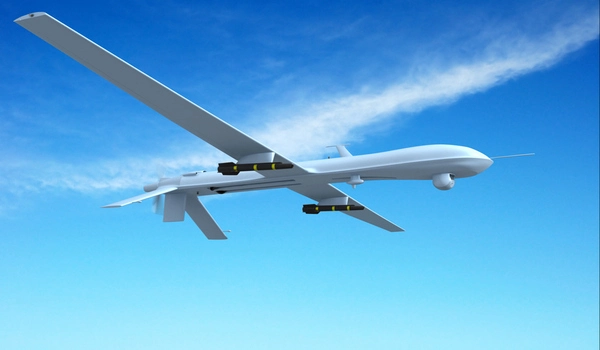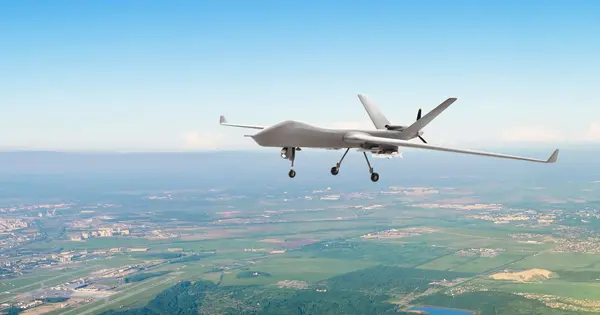Smart materials are materials that have certain properties that can change in response to external stimuli, such as temperature, pressure, humidity, or electrical or magnetic fields. They are often used in sensors and actuators to detect and respond to changes in their environment. Using smart materials in a wind sensor for drones could allow the sensor to be more responsive and accurate, potentially improving the performance of the drone.
Engineers created and tested a more efficient wind sensor for use on drones, balloons, and other autonomous aircraft. Wind sensors, also known as anemometers, are used to measure wind speed and direction. Researchers believe that as the demand for autonomous aircraft grows, better wind sensors will be required to help these vehicles sense weather changes and perform safer take-offs and landings.
According to Marcelo Dapino, co-author of the study and professor of mechanical and aerospace engineering at The Ohio State University, such enhancements could improve how people use their local airspace, whether it’s through drones delivering packages or passengers one day flying on unmanned aircraft.
“Our ability to use the airspace to move or transport things in an efficient manner has huge societal implications,” said Dapino. “But to operate these flying objects, precise wind measurements must be available in real-time whether the vehicle is manned or unmanned.” Besides helping aerial objects cross long distances, accurate wind measurements are also important for energy forecasting and optimizing the performance of wind turbines, he said.
Their research was published in the journal Frontiers in Materials.
Our ability to use the airspace to move or transport things in an efficient manner has huge societal implications. But to operate these flying objects, precise wind measurements must be available in real time whether the vehicle is manned or unmanned.
Marcelo Dapino
Traditional anemometers differ in how they collect data, but all of them have limitations, according to Dapino. Many types of anemometers are unsuitable for small aircraft because they are expensive to manufacture, consume a lot of energy, and have a lot of aerodynamic drag (the instrument opposes the aircraft’s motion through the air). The Ohio State team’s anemometer, on the other hand, is lightweight, low-energy, low-drag, and more sensitive to pressure changes than conventional types.
According to Leon Headings, co-author of the study and a senior research associate in mechanical and aerospace engineering at Ohio State, the instrument was made from smart materials, which are matter with controllable properties that allow them to sense and react to their surroundings. Polyvinylidene fluoride, an electric polymer, was used by the team (PVDF).

PVDF is widely used in architectural coatings and lithium ion batteries because it is piezoelectric, which means it generates electrical energy when pressure is applied to it. The device can be powered by this energy. A piece of flexible PVDF film’s measured voltage or capacitance change can be correlated to wind speed.
The PVDF sensor is built into an airfoil, much like an airplane wing, to reduce aerodynamic drag. Because the airfoil is free to rotate like a wind vane, it can be used to determine wind direction.
However, to see how their device would fare in the Earth’s atmosphere, researchers devised a two-part experiment. First, the sensitivity of the pressure sensor was determined in a sealed chamber. The sensor was then integrated into an airfoil and tested in a wind tunnel. The results demonstrated that the sensor accurately measures both pressure and wind speed. By measuring the absolute orientation of the airfoil relative to the Earth’s magnetic field, a small digital magnetometer compass integrated into the airfoil provides precise wind direction data.
However, more research is required to transition the wind sensor concept from a controlled research environment to commercial applications. Dapino hopes that his team’s work with PVDF and other advanced materials to improve sensor technology will eventually lead to technology that can be used outside of aircraft, such as wind turbines for clean, efficient, and easily accessible energy for the public.
“These are very advanced materials that can be used in a variety of applications,” Dapino said. “We want to expand on those applications in order to bring compact wind energy generation to the home.”
















